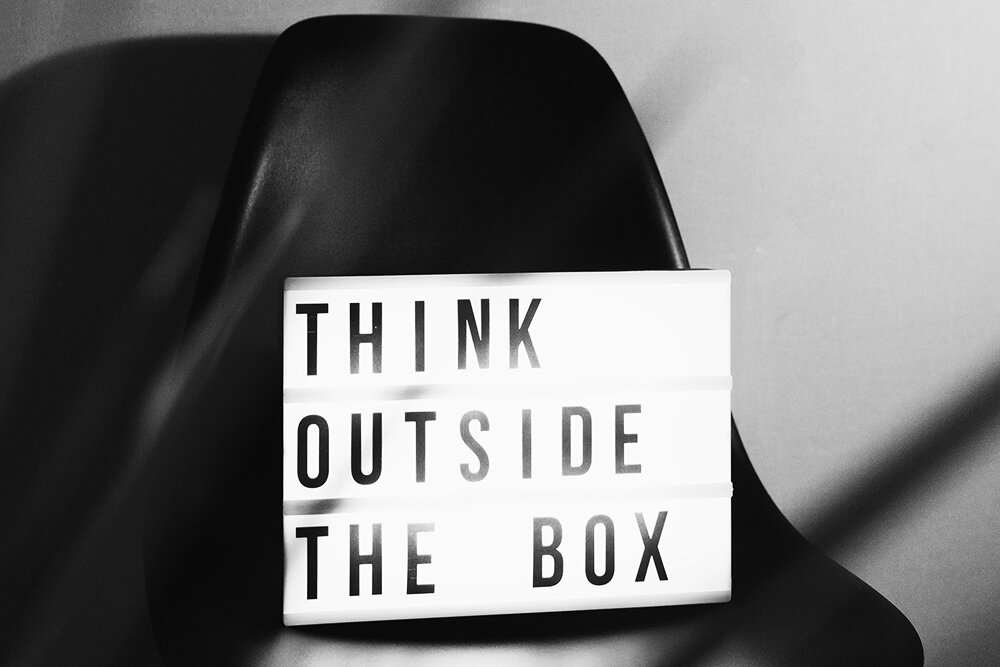We know. It feels like 2020 has lasted a decade. But gang, we’ve got a long way to go. We’re only one quarter into this fever dream of a year, and that means we’ve got nothing but time to research and implement the trends that will shape the way we brand as we march through the roaring (so far, more like groaning) 20s.
Here are the five most relevant, timely and meaningful trends we’ve uncovered, plus some great examples of flawless execution.
2020 Brand Trend #1: Nostalgia
What makes a tired, jaded, world-weary adult smile? Maybe it’s a rerun of Friends. Or Mariah Carey blasting on the sound system. Or tripping over a stack of old Polaroids in the attic. In the world of marketing, what’s old is new again, and for Gen-Xers and Xennials, the products, logos and brands from our 80s and 90s childhoods give us the warm fuzzies like nothing else. Brands that are familiar – or at least evoke familiarity in their design, form or function – make us feel comfortable. And comfort – like that first cup of Folgers, or just one OREO – leaves us wanting more. When it comes to nostalgic marketing, keep these tips in mind:
-
Don’t shy away from the emotion. Nostalgia, simply put, gives us the feels. And all those feelings motivate us to act — whether that’s buying a product, signing up for a newsletter, or following on social media. In fact, a recent Nieslen study examined the link between emotion and advertising, and found that when the two are aligned, the brand is more likely to achieve success.
-
Nostalgia marketing is built on relationships and trust. It should evoke positive, happy memories of “simpler times” – something we all crave more of in 2020.
-
Nostalgia can be used effectively by brands both old and new. But beware of upsetting the balance. Old brands can’t get stuck in the past, and new brands shouldn’t be seen as trying too hard. Instead, look for a happy medium; a way of making what was old new again, as Fujifilm did with its Polaroid Instax camera.
Trendsetter: Coca-Cola
The beloved heritage brand enjoys leveraging its nostalgia factor, but never quite as much as a recent campaign tied to Netflix original series Stranger Things. The soda-maker turned a London arcade into an 80s-inspired paradise, complete with vintage games and limited-edition cans celebrating the show’s third season.
The experience was a true mash-up of old and new: the soft drink that’s inspired songs, clothing, entertainment and more for over a century, and a wildly popular streaming series that evokes the best childhood memories (and nightmares).

2020 Brand Trend #2: Inclusivity
“Sex sells,” has been a truism of the advertising world for a long time now — too long, according to some marketers, who are looking to shift thinking to a “real sells” mindset. We’ve seen brands break away from airbrushed models and homogenous design in the last decade, asking not, “Is it sexy?” but instead, “Is it real?” This includes building ad campaigns that feature real humans looking… well… human. What does inclusive branding look like?
-
Inclusive branding features a diverse cast of “normal” people.
-
Representation matters. Consumers of all ages, races, backgrounds and orientation should see people who look like them.
-
While racial and ethnic diversity is vitally important, inclusive branding also highlights other forms of diversity, like people with different body types, disabilities, sexuality, etc.
-
The goal of inclusive branding is not to draw attention to someone who looks “different,” but rather, to showcase the common threads of humanity in all of us.
-
Over half of Millennials believe it is the responsibility of businesses to demonstrate a commitment to diversity.
Trendsetter: Dove
Beauty brand Dove has long been the leader in inclusive branding, and as of 2020, they’re all in. They’ve made a pledge to consumers that their advertising will always feature real women (no models), and that they will never digitally alter images or videos used to promote their products.

They’re also working toward their 2020 goal of educating 20 million young people on the merits of body confidence and self-esteem as part of their “Real Beauty Pledge.” Dove continues to challenge perceptions of beauty and promote its messaging that, “beauty is for everyone.”
2020 Brand Trend #3: Crisis Response
Okay, time to address the elephant in the room (or, in this case, the exhausted marketer in quarantine). The global coronavirus pandemic has upset the balance of our entire world, and the repercussions will be felt throughout every industry, not only for the duration of 2020, but for years beyond. While it’s too soon to know exactly what our brave new branding world will look like, we can surmise that it’s going to look a lot different than what we’re used to. What shifts will we see in the post-COVID era?
-
As global trade slows and our “just in time” economy reels from the shift, you may see more emphasis on localization, and possibly a return to “Made in America”-style campaigns and promotions.
-
While consumers are anxious to get back out into the world, they’re also going to be cautious. Brands can expect delivery, curbside pickup and no-contact buying options to be the norm throughout 2020. Online shopping will continue its climb, so brands who optimize the experience for consumers will likely build loyalty.
-
The virus has shifted the way we consume everything from food to merchandise to entertainment. Brands that can adapt and innovate will lead. Brands who already had a strong digital presence will likely find it easier to adjust to the new state of affairs, and those who didn’t will need to become flexible.
-
Proving that we’re all in this together, one of the top trends that has emerged is the increased virtual connection between people – both everyday folks and celebrities or influencers. Three months ago, who would have imagined a Zoom birthday party? Or watching late night TV with the host’s children running amok in the background? Brands that capitalize on this virtual togetherness will reap the benefits, even after the quarantine is lifted.
Trendsetter: The Tonight Show with Jimmy Fallon: At Home Edition
You might remember staying up late to watch Carson, or still have strong feelings about the Letterman vs. Leno debate. But one thing remains true: late night television has been ingrained in our culture – and our comedy – for a long time now. We welcome the hosts into our homes, but after a while, the monologues feel tired, the guests are blah, and it all just seems a little too routine. Enter the pandemic of 2020. In a few weeks, talk show hosts and entertainers had to adapt to canceled performances and stay-at-home orders. Musicians suddenly began offering concerts online, movie stars read children’s books aloud at bedtime… and late night hosts started working from home like the rest of us. Early on, Jimmy Fallon’s iteration of The Tonight Show made headlines – primarily because his two young daughters stole the show. This intimate and casual glimpse into the life of a celebrity resonated with viewers, who raved about the “realness” and authenticity of the reimagined talk show.

With celebrity guests Zooming in for interviews, the show offered a stripped down approach that simultaneously gave viewers an escape, while letting them know we’re all sharing the experience of this quarantine. It wasn’t easy to make the shift to virtually producing a talk show, but for Fallon and his team, it’s paid off.
2020 Brand Trend #4: Avatars
The robots are here, and they are our friends. Or at least, they’re trying to be. 2020 will see a rise in the use of avatars as a branding tactic, and interacting with them will become more meaningful than asking Alexa to add dish soap to your shopping list. Avatars are being used as spokespeople (spokesbots?) for major brands from Wendy’s to global news agencies. They’re designed to lend personality to a brand, and create an interface that is personal, helpful and customized. But before we let the robots take over, there are a few things to keep in mind:
-
Avatars give brands a human-ish face, but they can also come across as too cutesy, cartoony, or even unsettlingly realistic. It’s important to find the balance between the extremes.
-
Sure, we try to stump Alexa or Siri by asking them strange questions or trivia, but we aren’t forming deep bonds with them. Avatars aren’t meant to drive relationships between consumers and the avatar itself; but rather, between the consumer and the brand.
-
Avatars connect with people in the digital space they inhabit. They serve a function and offer useful information that solves problems. They aren’t there to be merely entertainment. They are guides, taking us through our unique digital journey.
Trendsetter: Amazon
You know that friend? The one who goes on runs with you and keeps you motivated, even when you’re sweaty, exhausted and would much rather be on the couch bingeing Ozark? The one who reminds you to schedule that doctor’s appointment you keep putting off? Yeah, that friend. What if you were wearing her… on your wrist? Amazon has announced it’s working on a new wearable featuring everyone’s favorite AI, Alexa. But this version of Alexa will have an intimate, insider look at your health, through biofeedback technology. In fact, she’s such a close friend, she may even be in tune with your emotions.

Though we don’t know yet how this product will go over with a post-pandemic market, you can expect to hear much more about it as we roll through 2020.
2020 Brand Trend #5: Greening Up
There’s a new generation on the rise, and their hero is a Swedish teenager who skips a lot of school. Don’t let the Pippi Longstocking braids fool you – 16-year-old Greta Thunberg is a force, and her ilk of civic-minded, socially conscious and fearlessly outspoken tweens and teens are swiftly approaching their coming-of-age, when they will be the only ones deciding which companies get their dollars… and their support. Green marketing is nothing new, but the passion and determination it has inspired in the upcoming generation is unprecedented. Keep these tips in mind when considering your brand’s approach to sustainability:
-
Don’t be fooled into thinking you have years to get your brand’s eco-policies in order. Young activists are loud, and they have the ears of many -- their peers, their governments and their parents. They are influencing the way adults are buying, and the businesses they support.
-
Sustainability is about a lot more than using recycled materials. It encompasses your business’s manufacturing operations, treatment of employees, social responsibility and much more.
-
Millennials are the most willing to pay more for eco-friendly products at 61%, but that’s not the whole story. Gen Xers follow close behind, and even the much-maligned Baby Boomers responded with 46% in favor of higher prices for more sustainable products.
Trendsetter: Fjӓllrӓven
Back to Greta’s home turf, Swedish backpack maker Fjӓllrӓven has graced the backs of Scandinavian children for generations. But the eco-minded outfitter is known for its practices in sustainability at every phase of production – from design to sales. What sets the brand apart is their transparency in detailing every step of the process, from the materials they use to the promises they make their employees and customers.

Fjӓllrӓven has expanded beyond its Nordic borders and can be found much more widely in the U.S. now. It is a member of the Sustainable Apparel Coalition, and has been ranked as one of the most environmentally friendly apparel brands.
As we noted above, there’s still plenty of 2020 yet to come, and we’re sure to see many other trends emerge as the world recovers from the emotional, physical and financial impacts of the pandemic. For now, we’ll continue doing what we do, safe from home, bringing you the latest on trends, data, technology and more to build your business’s marketing strategy.







